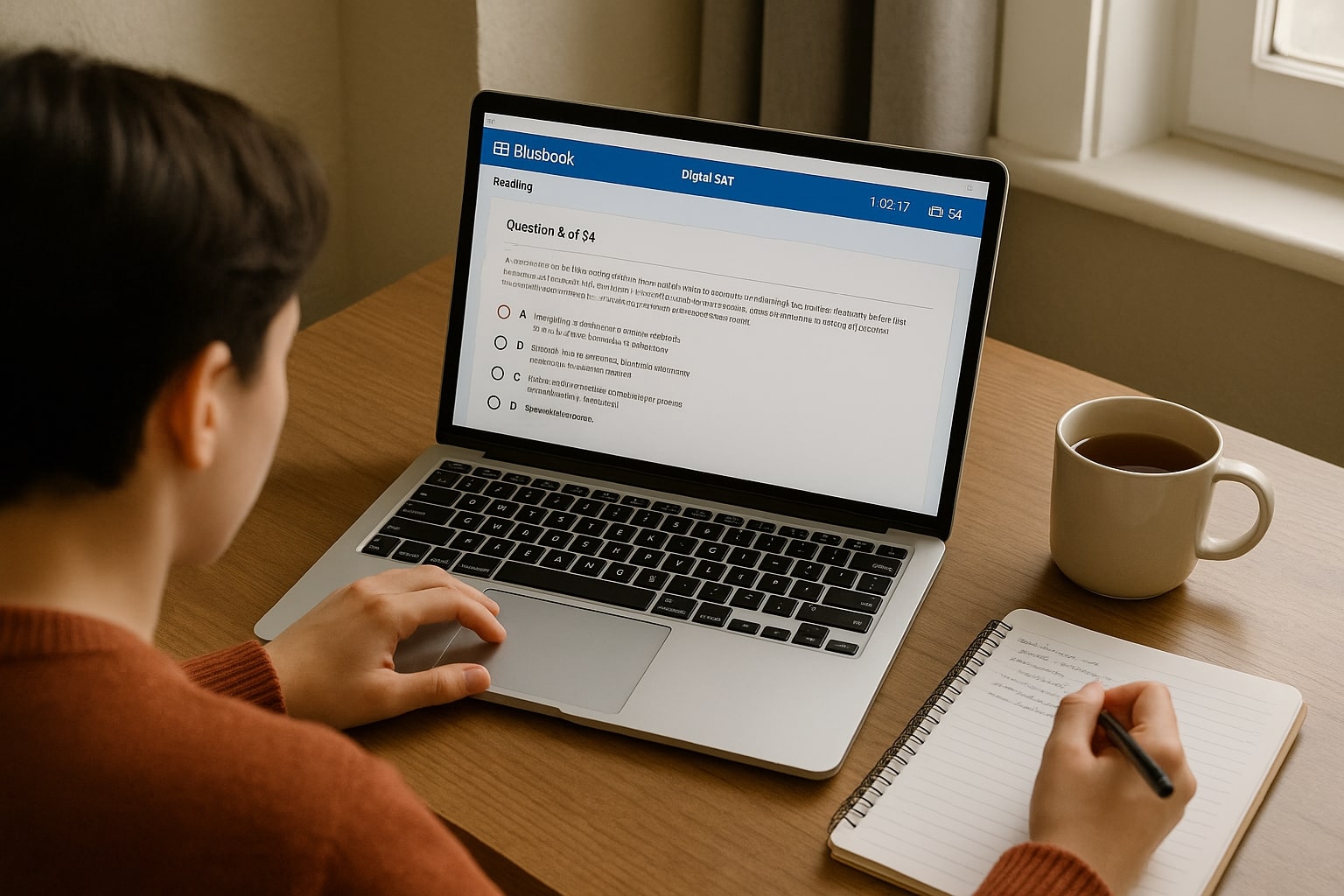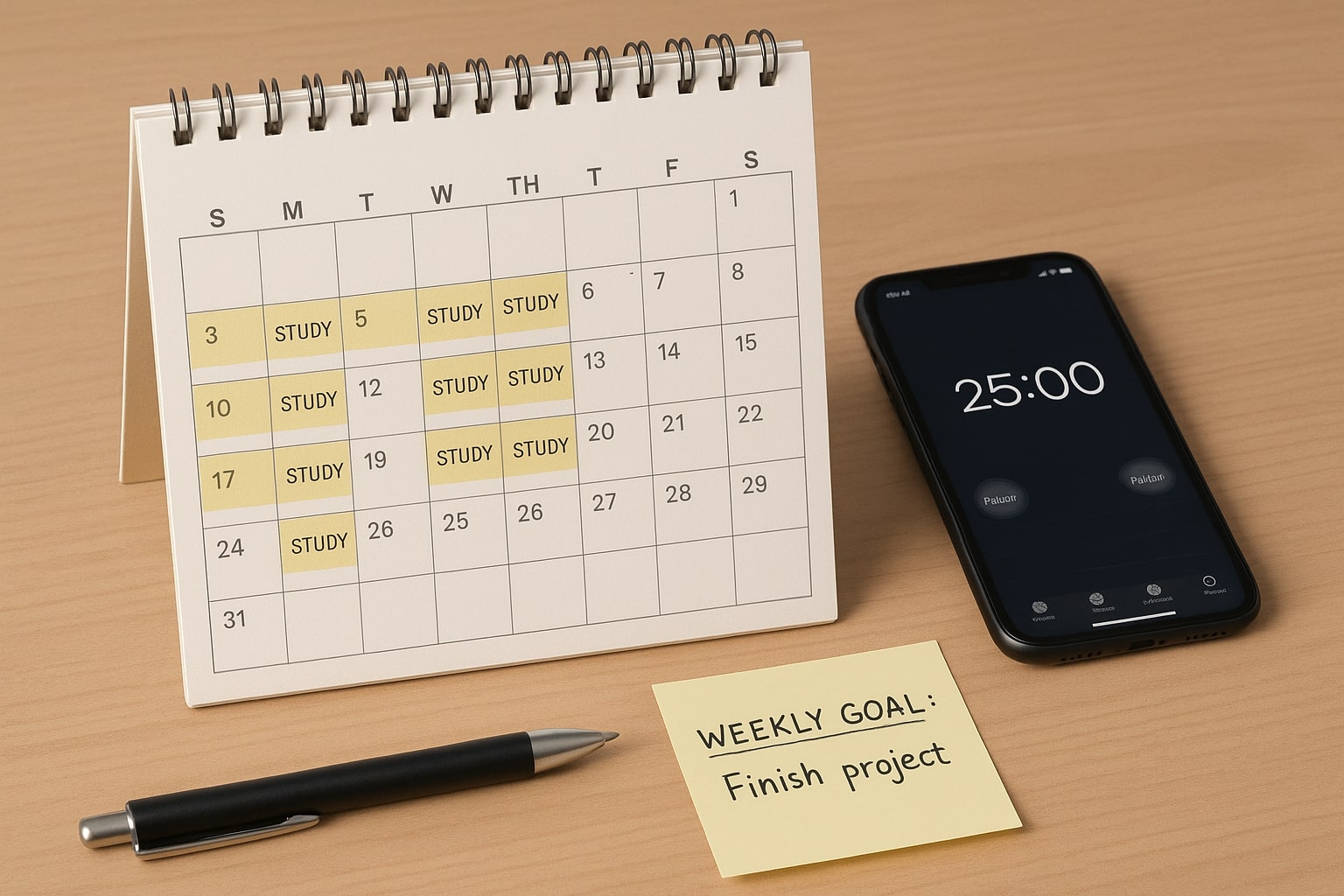Introduction: Why consistency beats cramming for the Digital SAT
There’s something electric about exam season: the rush of deadlines, a calendar full of assessments, and the tempting idea that one heroic night of cramming will save the day. Spoiler alert: it rarely does. For the Digital SAT, which emphasizes adaptive testing, timing, and consistent skill application, steady preparation pays off far more than last-minute panic. This post is a warm, practical roadmap to keeping your SAT study routine steady during the busiest academic stretches—without burning out.
Understand what “consistency” really means
Consistency isn’t about studying ten hours every day. It’s about deliberate, manageable repetition—small wins stacked over weeks and months. Think of it like learning a musical instrument: five focused minutes daily often produces more progress than a frantic, unfocused three-hour session once a week.
Key elements of meaningful consistency
- Regularity: short, scheduled sessions that become habit.
- Variety: switching between practice tests, targeted drills, and review.
- Reflection: checking progress and adjusting methods.
- Recovery: rest and mental breaks to keep learning efficient.
Build a study routine that fits exam season
When school tests pile up, your SAT prep must fit like a puzzle piece—not become the whole puzzle. The trick is designing a routine that respects your current obligations while protecting a reliable block of study time.
Weekly structure: the 3×30 plan
A practical structure when you’re busy is the 3×30 plan: three focused SAT sessions of 30 minutes each per week. That’s only 90 minutes a week, but if those 30 minutes are targeted, you’ll maintain momentum and skill. Here’s how to allocate those sessions:
- Session 1 — Skills & drills: targeted practice on weak topics (e.g., algebra, command of evidence) with short explanations.
- Session 2 — Strategy & timing: practice pacing, passage mapping, or question triage techniques.
- Session 3 — Review & reflection: analyze mistakes, write a short plan for next week.
Daily micro-habits that add up
When you have one exam in math, one in history, and a chemistry lab report due, tiny habits help. Examples:
- One official Digital SAT question a day (time yourself; treat it like test-day pacing).
- Two minutes reviewing a single math formula or grammar rule.
- Reading one short complex paragraph aloud to practice comprehension speed.
Use adaptive, official practice to stay aligned with the test
The Digital SAT’s format rewards accuracy, strategy, and familiarity with the testing interface. Use official adaptive practice tools and full-length practice tests occasionally to remind your brain what real test conditions feel like. Even during exam season, schedule one full digital practice test every 4–6 weeks; between those, keep the shorter, focused sessions going.

Plan around your school exam calendar
Take your school exam schedule and map it onto a study calendar. The goal is not to eliminate SAT study, but to be realistic and adaptive.
A flexible 4-week plan for a heavy exam month
| Week | Focus | Session Types (approx.) | Time Commitment |
|---|---|---|---|
| Week 1 (Busy start) | Maintenance & micro-practice | 3 micro-sessions: 1 skills, 1 timing, 1 review | 90–120 minutes |
| Week 2 (Mid-month tests) | Light practice & active rest | 2 micro-sessions + 1 short reading session | 60–90 minutes |
| Week 3 (Tests taper) | Target weak areas highlighted from prior sessions | 3 focused sessions: targeted drills, strategy | 90–120 minutes |
| Week 4 (Recovery & consolidation) | Review mistakes; one longer timed practice (half-test) | 2–3 sessions including half-length practice | 120–180 minutes |
This plan keeps progress measurable while respecting academic obligations. You’ll notice that even in your heaviest weeks you never completely abandon SAT practice—a psychological win that keeps skills fresh.
Quality over quantity: how to make short sessions count
If you only have 25–30 minutes, don’t wander aimlessly. Make every minute intentional.
A 30-minute power session blueprint
- Minutes 0–2: Quick setup and goal statement (what you’ll complete and why).
- Minutes 2–18: Active practice (timed questions, focused drills).
- Minutes 18–26: Immediate review—identify the 1–3 mistakes and why they happened.
- Minutes 26–30: Write a 1-line plan to avoid the same mistake next time.
Track your progress with simple tools
Consistency is easier to maintain when you can see progress. Keep a small tracker—a notebook, a spreadsheet, or a tracking feature inside your study app—that records:
- Date and length of session
- What you worked on
- One measurable result (score on practice questions, time per question)
- One learning takeaway

Why the tracker matters
On tough days, your tracker is proof you didn’t lose ground. It turns vague “I studied a bit” into precise wins you can build on. When you plan, glance at the tracker to pick what’s next—don’t waste time guessing.
Blend content review with strategy practice
Content knowledge (algebra skills, grammar rules) and test strategy (passage triage, time management) need different kinds of attention. During exam season, split your study time so you don’t lose either edge.
- Content days: Focus on mastering one specific concept deeply.
- Strategy days: Practice pacing, guessing strategies, or digital test tools (like the built-in calculator or answer flagging).
- Mixed sessions: Do a few questions that force you to use both content and strategy under time pressure.
Leverage short, official practice resources
Official short practice items and question-of-the-day formats are perfect when you’re strapped for time. They give the most test-relevant exposure for minimal effort, and they keep you familiar with the test’s wording and structure.
Make exam season sustainable: rest and recovery
It’s tempting to stack all studying onto late nights, but sleep and breaks are part of the work. Your brain consolidates memory during sleep—so skipping rest actually costs you more time in the long run. During exam season, prioritize short, high-quality sleep and mental breaks. Two practical habits:
- Use the 90–20 rule: study for 90 minutes, then take a 20-minute reset if you feel foggy.
- Two guaranteed no-study zones: the hour before bed and the first 30 minutes after waking. Use morning minutes for light review if that’s your preference, but avoid heavy new learning right before sleep.
Keep motivation alive when deadlines loom
Motivation dips in exam season are normal. The trick is scaffolding motivation so you don’t rely on willpower alone.
Simple motivation boosters
- Public commitment: Tell a friend or family member about your weekly SAT minutes goal.
- Micro-rewards: after three consistent sessions, treat yourself to something small—ten extra minutes on your favorite show, a walk, or a favorite snack.
- Visual progress: A simple calendar with checkmarks is surprisingly satisfying—watching a streak grow builds momentum.
Use targeted review to make mistakes profitable
Mistakes are data. During exam season, when you can’t do long study blocks, make each error more useful. Create a one-page error log for the week: list each incorrect question, why it was wrong, and a one-line rule to fix it. At the end of the week, review only the one-line rules—small, fast, and powerful.
Practice under realistic digital conditions
Familiarity with the digital test environment reduces anxiety and prevents silly mistakes. If you can, practice on the same device you’ll use for the Digital SAT or run official practice tests on a similar setup. Even short, timed sessions with the Bluebook-style tools will keep you fluent with navigation, answer flagging, and the calculator’s placement.
When to scale back and when to ramp up
Scheduling flexibility is vital. If you have a week of intense school exams, it’s OK to scale back to purely micro-sessions. Conversely, if your school tests are lighter for a few weeks, ramp up slightly—add an extra focused session or a half-length practice test.
How personalization accelerates consistent progress
Not every student improves the same way. Personalized guidance helps you stretch limited study time into the most meaningful practice possible. If you have access to tailored support—whether an advisor, teacher, or dedicated tutoring—it can help you identify the exact skills to practice when time is short. For example, personalized tutoring often offers:
- One-on-one guidance that targets your precise weak spots.
- Tailored study plans that fit around your exam calendar.
- Expert tutors who can model test-day strategy and help you process mistakes faster.
- AI-driven insights that prioritize which practice items yield the most score improvement.
Sparkl’s personalized tutoring models these benefits—delivering focused 1-on-1 help, custom plans, and data-driven recommendations that fit perfectly into a busy exam season. When used sparingly and strategically, such support can make short study sessions much more effective.
Examples: Two students, two calendars
Seeing real-life examples is helpful. Below are two sample calendars that show how consistency can look different depending on your workload.
| Student | School Load | Weekly SAT Plan | Why it works |
|---|---|---|---|
| Jordan (heavy AP week) | AP exams and project deadlines | 3×30-minute sessions: targeted math drill; 1 timed reading passage; 1 review/error log | Short sessions preserve energy; focuses only on high-return areas. |
| Maya (lighter week) | Light quizzes, no major tests | 1 half-length practice test; 2 targeted 45-minute sessions; weekly tutor check-in | Opportunity to simulate test conditions; tutor feedback accelerates improvement. |
Practical tips for making study stick
- Batch similar tasks: If you’re reviewing multiple small mistakes, batch them into one 20-minute session to avoid setup costs.
- Set your environment: a consistent study space cues your brain that it’s time to focus.
- Use technology to your advantage: timers, digital question banks, and practice apps make short sessions easier to manage and measure.
- Be kind to yourself: missed sessions happen. Restart the next day—consistency is about the long arc, not perfection.
How tutoring or coaching can fit without overwhelming your schedule
If you choose to work with a tutor, keep sessions short and strategic during exam season—one focused 45–60 minute session every 1–2 weeks can be more useful than weekly hour-long meetings. The tutor’s job is to diagnose mistakes, give you a micro-plan for the next two weeks, and check progress. That way, coaching amplifies your short practice sessions rather than replacing them.
Test day readiness checklist (for busy students)
- Device check: Ensure your testing device meets requirements and Bluebook is installed—do this at least 30 days before test day.
- Practice under timed conditions: at least one half-length or full-length digital practice test in the 4 weeks before test day.
- Sleep: prioritize consistent sleep the week before the exam.
- Logistics: admission ticket, approved ID, and any approved accommodations prepared in advance.
- Mental strategy: a 5-minute breathing or focus routine to use before the test starts.
Final thought: consistency is a habit you can build
Exam season doesn’t have to derail your SAT preparation. With small, intentional sessions, clear tracking, realistic planning, and occasional personalized guidance, you can keep moving forward without burning out. The Digital SAT rewards steady familiarity with the test format and calm, practiced decision-making—both of which are built by consistency, not cramming.
If you ever want a custom week-by-week plan that fits your exact exam calendar and strengths—something you can follow even in the busiest of months—consider a short consultation with a tutor who can create a tailored plan, check progress, and offer technique refreshers. Sparkl’s personalized tutoring approach (1-on-1 guidance, tailored study plans, expert tutors, and AI-driven insights) is designed to fit into students’ busy lives and make each minute of study count.
Take a breath. Pick one small action from this guide, try it this week, and notice how it feels. Consistency doesn’t arrive overnight—but with tiny, intentional steps, you’ll arrive at your goal faster, calmer, and better prepared.
Ready to start?
Choose one micro-habit—one official practice question a day, a single 30-minute session thrice weekly, or a weekly error log—and begin now. The most important thing is to begin in a way you can sustain. Good luck: you’ve got this.















No Comments
Leave a comment Cancel